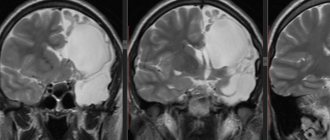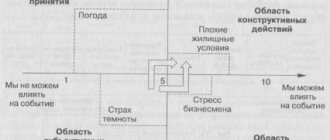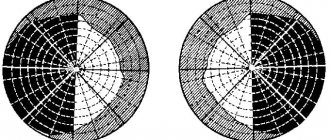Karl Leonhard - Accented personalities
3 …172
I would not have gone out to give lectures if there had been no demonstrativeness; I would not have written anything, not even this preface, if I had not been stuck on it. The publishing house would not have accepted the manuscript if I had not punctually checked the errors. And how can I not be happy if I find out that you liked my preface? I confess that I will be upset if you don’t like it. Of course, I am writing this preface with my own view of things. But I also take into account all the changes that are taking place in the points of view of our psychiatrists and psychologists.
We can talk about accentuation only when any trait of temperament or character begins to become overly pronounced, making the personality unusual.
So don’t rush to diagnose yourself and your loved ones.
But if, after all, you turn out to be an accentuated person, then look for the proper use for yourself, so that your accentuation would contribute to your personal growth, and not slow it down.
If you are a demonstrative person and have artistic abilities, try yourself on stage or take part in amateur performances. As a last resort, the profession of a teacher is also suitable for you. After all, he has to be on stage all the time. But don’t do what one of my patients did with demonstrative accentuation. From the age of 5 she was on stage. Everyone predicted a good artistic career for her, but her parents insisted that she take up radio engineering. She didn’t study at the technical school so much as participate in amateur performances. After graduating from school, I went into production. There she married an engineer, who soon took a prominent position, forbade her to engage in amateur performances and forced her to graduate from the Institute of Finance and Economics. She made “scenes” for her husband. It is possible that this led him to develop a serious illness from which he died, since he did not think to leave her. She then experienced unusual increases in blood pressure for many years. It all went away when she, having undergone psychological training, realized that she needed to be on stage. She took up amateur artistic activities, underwent retraining and became a practical psychologist. Now she successfully works as a psychology teacher and sings for friends and co-workers on holidays. There were no traces left of the painful manifestations.
I think this example should be instructive for you, my dear reader, whether you are thinking about yourself, your child, or your employee.
A.E. Lichko used it to develop his concept of accentuations. We included this material in lectures for psychiatrists. I wish the reader to find something useful for himself.
Now I would like to turn again, mainly to my colleagues - psychiatrists and psychotherapists. Maybe this will be useful to other readers as well. I want to figuratively draw in the form of circles the entire series from the norm through hidden and obvious accentuation to pathocharacterological development and psychopathy, and thereby determine the place of accentuation in modern clinical medicine and psychology (one of the points of view).
First, let's draw a diagram of a normal personality.
You see a wheel, the center of which is the inclinations as anatomical and physiological prerequisites for the development of abilities. The next circle is abilities as personality properties, reflecting the speed of acquisition of skills, knowledge, and abilities. Then comes temperament as a personality property, reflecting the dynamics of mental activity. The book talks about temperament in detail. Next comes character as a personality property, reflecting a person’s attitude towards himself, people and work. And finally, orientation, consisting of the motivational sphere, beliefs, ideals and worldview.
Thus, a normal personality is represented in the picture as a smooth wheel that rolls smoothly along the roads of life. All life difficulties for such a person are associated with the difficulties of the external situation, and not with himself.
With hidden accentuation, features associated with inclinations or abilities are corrected by proper upbringing. And in communication there are no signs of accentuation, but the person himself experiences certain difficulties. When compensatory mechanisms begin to fail, signs of accentuation may come out.
With obvious accentuation, personality traits appear only in special conditions, when the “wheel” of personality collides with the road of life with its thorn.
If the life of an accentuated personality turns out unfavorably, then a complete deformation of the personality may occur, difficult to distinguish from psychopathy. We call this condition pathocharacterological development.
And we talk about psychopathy when there is a total deformation of the personality to such an extent that it disrupts its social adaptation. In the picture it is represented by a completely distorted wheel.
And now a few words to the leaders. You might want to translate all this into everyday language. I'll try to do this now.
In our real life, many managers do not always take into account personality traits and often, with the best intentions, promote to leadership positions those who, due to their personal characteristics, cannot cope with this, although as a specialist they may be quite at the level. And there’s nothing you can do about it. It is better to take into account his personal characteristics. I want to present to you my personality typology, where there is practically no medical terminology. Read it below in the attachment.
Retelling the content of the second part is as useless as retelling Pushkin, Shakespeare, Homer and works of literature in general. Here you can only say “Like” or “Dislike”. I like. In addition, reading this part is useful for general development.
APPLICATION
PERSONALITY TYPES
The decisive influence of personality structure on a person’s fate does not require lengthy justification. That is why every serious researcher, based on his clinical or psychological practice and his own theoretical views, built his own taxonomy of personality. The taxonomies of Sheldon, Kretschmer, Freud, Adler, Jung, Horney, Fromm, Bern and many others are known in the literature. Adhering to the concept of E. Bern and Horney, I described seven maladaptive personality complexes (M.E. Litvak, 1995) and established correlations personality structure with life trajectory and neurosis structure.
This approach suited and suits me quite well when it comes to clinical practice. A sick person comes to see me, often with advanced forms of neurosis. Here it is no longer possible to do without correction of the personal complex. And patients, being in a dead-end situation, willingly undergo such often painful influences.
3 …172
Schmisek-Leonhard test
G. Smišek developed this character test in 1970 based on Karl Leonhard's theoretical concept of accentuated characters. Sometimes the name Leonhard-Šmishek (Šmishek-Leonhard or simply “Šmishek” as professional jargon) is also used.
According to the concept of character accentuation, personality traits can be divided into basic and additional. The main character traits form the core of personality, determine development, adaptation processes, and mental health.
Resources and limitations
Of course, experiencing constant anxiety and doubt is very difficult. It can be difficult for a pedant to fall asleep peacefully and relax. He needs to think about the past day, find mistakes in his own actions, and ways to solve problems.
So it will turn out to be quite natural that due to insomnia in the morning he will get up lethargic and “broken.” The body simply will not be able to restore resources. It is for this reason that failures may occur in the functioning of individual organs and systems.
A pedant often experiences obsessive-compulsive neurosis. That is, a person with this type of accentuation washes his hands hundreds of times during the day, for fear of catching some kind of infection.
Be sure, before he falls asleep, he will check more than once whether the gas, lights, iron are turned off, whether the door is locked, although it has never happened that due to inattention he left electrical appliances on, etc.
Scrupulousness is also reflected in the state of health, which he begins to take seriously, and thereby resembles a hypochondriac.
At the first indisposition, the pedant goes for examination, and if he doesn’t go, it’s because he considers himself terminally ill and is afraid to learn his terrible diagnosis from the doctor.
Due to excessive attentiveness to his own health, the pedant most often does not abuse alcohol or smoke, strives for a healthy lifestyle, does exercises, and tries to eat right. With this type of accentuation, people dependent on alcohol and drugs are rarely found.
People with this type of character can be boring and cautious when communicating with others. They are not confrontational, but if order is disturbed, they are capable of losing their temper and getting irritated because they wasted a lot of effort.
What is a pedantic type of personality accentuation?
In terms of their behavioral characteristics, pedantic individuals do not go beyond what is reasonable; this is often their main advantage when solving business issues. A pedantic person is thorough, clear, complete, conscientious. Being assigned a task that requires responsibility can be depressing for a pedant if he does not have detailed instructions and a list of requirements. Such people are well aware of the responsibility when performing assigned tasks, as well as the responsibility at work, which pedants almost never change for a long time.
Pedantic scrupulousness can be expressed by high business qualities and concern for one’s own health. When this caring is expressed in moderation, it becomes a positive quality. Ultra-careful people are careful, do not drink alcohol or drink little alcohol, and do not smoke.
Negative traits of this nature manifest themselves in indecision, fear of accidents or mistakes, which forces you to repeatedly check your own actions: did you turn off the gas stove, did you make any mistakes in the report, etc.
Points of least resistance. Cases in which it is necessary to make decisions, act quickly, increased workload, situations requiring a responsible approach.
Protest reactions. Protest is expressed verbally - “muttering”, swearing, but actions are practically excluded, the pedant blames himself for everything.
Strengths. A caring person, capable of being responsible for the health of others, becomes attached to another, responsible for the work that was entrusted to him, scrupulously ready to check and double-check everything.
Dysthymic, with a tendency to mood disorders.
Exalted, prone to affective exaltation.
All these groups of “accentuated personalities” are united according to the principle of accentuation of character traits or temperament. Accentuation of character traits includes:
6 pages, 2790 words
6.18. Smišek test
Shmishek test Purpose: determination of personality accentuations. Description of the method: Contains 10 scales in accordance with the ten types of accentuated personalities identified by Leonard. Instructions Answer 88 ... 19 points the character trait is accentuated. Interpretation: The 10 types of accentuated personalities identified by Leonhard are divided into two groups: character accentuations (demonstrative, non…
a) demonstrativeness (in pathology: psychopathy of the hysterical circle);
b) pedantry (in pathology: anankastic psychopathy);
c) excitability (in pathology: epileptoid psychopaths);
d) stuckness (in pathology: paranoid psychopaths).
Other types of accentuation relate to characteristics of temperament and reflect the pace and depth of effective reactions.
A sign of accentuation is a score over 18 points.












